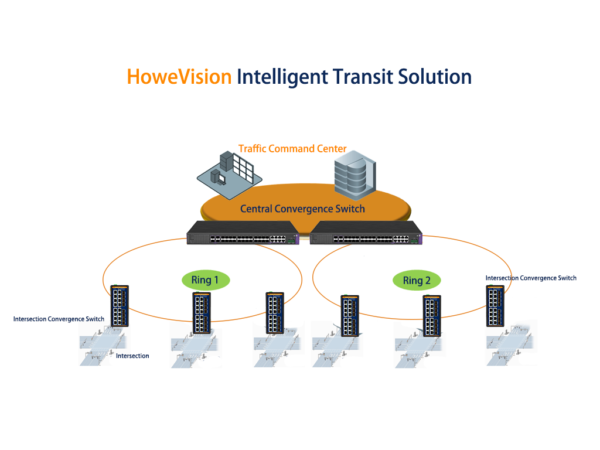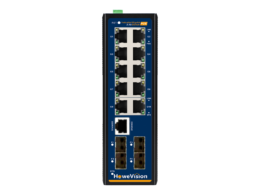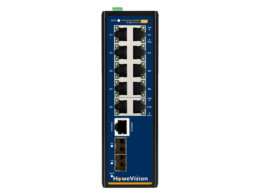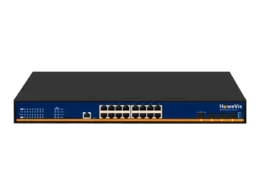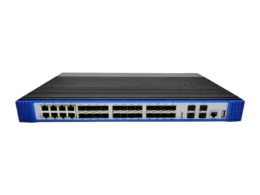Network downtime is like a blocked road. More vehicles, more problems. A vicious cycle starts unless the traffic police clear the road. Network downtime can cost billions of dollars, especially in industrial areas, bigger businesses, and enterprises which are looking for reliable and real-time tracking facilities. The network is down. There are no traffic processes. Blocking is inevitable.
Ethernet has made things easier, thanks to its Gigabit Technology and upcoming terabyte speeds. But we are stuck. Everything goes down like the human in the end age. The only solution is to split and implement better solutions to keep network uptime higher.
So, have we done that? ERPS is effective. Let’s find out how.
Suggested Reading: What is Industrial Ring ERPS Technology?
What is Ethernet Ring Protection Switching?
Have you heard about it? It’s like the first time I listened to the word, yet it was a meaningful journey to explore.
In networking technology, ERPS refers to Ethernet ring protection switching, a fundamental approach to network designs. The ultimate goal of implementing the Ethernet ring is to facilitate Ethernet traffic to multiple connections with a high level of redundancy. When traffic is higher, we encounter various problems.
Let’s take a simple example of a road. If the traffic is higher, there is more congestion. More congestion means the blockage is imminent. Implementing Ethernet rings across the network will fight this block and facilitate the Ethernet traffic to pass efficiently through the network. High-level redundancy(a Core feature of ERPS) puts us ahead of the future.
Concepts are not clear until we assimilate how everything works. Let’s scroll to the working mechanism and learn by heart.
How does Ethernet ring protection switching(ERPS) work?
Rings, nodes, bottlenecks, and redundancy all seem to be frustrating. Is that the case with you? Is it the same as me? If yes, go through the end of the blog to figure out all the puzzles at once.
Let’s proceed with the Ethernet ring protection Switching again to determine how exactly it performs the actual tasks.
Ethernet ring protection switching works as a backup supply. If one ring fails, we have another to flow the traffic and let the work be on time. No interruptions, no more bottlenecks.
Here are some points to streamline the intricacies of Ethernet ring protection switching(ERPS).
- The network nodes have connections to each other in the loops and rings. Since a ring is a closed loop, a data packet would move through it endlessly, fatally affecting the bandwidth.
- In that case, Ethernet ring protocol switching(ERPS) blocks one of the links to prevent the endless circle. There will be no more loops, and the straight traffic flow will become inevitable.
What if a node fails to let the data packets process through it? That’s the ultimate question that hit my mind the first time, though ERPS handles it effectively.
- If a link fails, ERPS unblocks the blocked link to keep the network alive without causing the failure.
The whole concept seems easier now, at least for me. Once you understand the standards of Ethernet ring protocol switching, everything will be a piece of cake.
2 Standards of Ethernet Ring Protection Switching
For the first time, this topic is like a ghost that disappears every time you try to catch it. But no problem, we have two standard principles to capture the gist of Ethernet Ring Protection switching ERPS.
G.8032 is a diamond standard for ERPS. But that doesn’t end here, as we have two versions. One is better than the other. Do you believe it? Why not determine it below?
ITU-T G.8032v1
The same standard, two faces. G.8032 has two versions, V1 and V2. Let’s find out which one is a diamond.
All devices support the first version of G.8032, making it a better option for usage. In an Ethernet ring, we connect different nodes regardless of whether they are part of other rings.
It is a SINGLE RING TOPOLOGY NETWORK!
There is a Ring Protection Link(RPL). This Ring Protection Link(RPL) does all the tasks of blocking and unblocking, and it is a kingmaker for the network. Whenever the network usually functions, the Ring Protection Link(RPL) owner stops the RPL and doesn’t let the data packets move along the loops, so flow is normal. When the network fails, the RPL owner does its job. It can unblock the RP link and let the traffic pass through it. Getting it can be challenging. It is a straightforward example of vessel anastomoses in the human body.
ITU-T G.8032v2
The version is nothing tricky but has to support fewer devices. Understanding this standard is not rocket science, so the features are here.
- MULTI-RING SUPPORT OR LADDER NETWORK SUPPORT
- Devices like MX Series and ACX Series routers support it effectively.
- Depending on the link’s block and the network’s stoppage, it has a revertive and non-revertive mood.
- It procures administrative commands like the Forced switch and manual switch approaches, yet another critical feature to concentrate on.
Remember. G.8032 can lower the network downtime to less than 50 milliseconds, helping you maintain all tasks without kicking the can.
3 Ring Protocols to crack the NutShell
Ring protocols can be diverse; three is just an example; never mind. Ethernet comes across multiple protocols, such as ERPS, MSTP (802.1s), and RSTP (802.1w). The list is long, but we have to be short. Do you know why? A long list would distract us from the original topic, and I don’t want that.
Therefore, I have listed three major ring protocols in the Ethernet network to handle traffic and overcome potential networking challenges. Get them here.
RSTP
RSTP, another name for Rapid Spanning Tree Protocol, is one of Ethernet systems’ oldest and most challenging methods. It helps build the link in the redundant methodology that potentially reduces the network downtime; still, we have some deficiencies.
Two major limitations. These are:
- The Rapid Spanning Tree Protocol’s network recovery time is higher. It varies from 2 to 10 seconds, multiple times more than the ERPS. So, fewer applications are available.
- It can handle seven hops, so it only costs the bigger businesses and industries to deploy more hardware for traffic management, which is another headache for the money-saving plans.
MSTP
Multiple Spanning Tree Protocol is an alternative to the RSTP that prevents extra hardware expenditures. The most significant limitation is the recovery time, which is 10 seconds. Who waits for such a high recovery time?
However, the COST-EFFECTIVE option can make it a good opportunity.
ERPS
We have already highlighted the ERPS’s significant features. However, it has potential advantages over the R and M spanning tree protocols.
These are:
- The rings’ no limitations make them a better choice for everyone, whether at home, in an industrial zone, or at commercial points.
- Faster convergence. Lesser recovery time. One of the most prominent advantages is a recovery time of less than 1 second; enterprises can save hours of work and millions of dollars under this system.
These Ethernet protocols have provided a practical approach to our networking panel.
6 Major Applications for the Ethernet Ring Protection Switching Protocol
Ethernet ring technology is the ultimate option for Ethernet and power over Ethernet systems. A network’s performance relies on numerous factors; traffic is one of those factors.
However, I have listed some Ethernet ring protection switching technology applications to get the picture to the far end.
Surveillance Control Systems
A surveillance system provides us with complete security from the penetrators. A surveillance network might comprise different switching layers.
Usually, there is no such traffic problem for such systems. However, when considering installing security cameras on a large scale and in industrial surveillance systems, you must consider many factors. One of them is traffic. For Real-time tracking, you have to be more efficient at producing the videos and sending them to the servers and control panels for saving.
Since video recording, transfer, and saving co-occur, everything can cause several hurdles. Therefore, we must have an integrated solution to handle this situation.
Ring topology can effectively end this problem by employing the RPL owner node. This owner node will prevent looping and provide a better alternative in case of higher traffic failure. Everything occurs in milliseconds, making it a good idea to deploy.
Intelligent Transportation Systems
Intelligent transport systems are another example of ring applications.
In Us or China, we have developed facilities, more transport options, and higher traffic. Even if we are using a LAN, multiple options come to mind owing to the higher population in China. Since more mobile devices are in a single network, we consider the possibility of a network failure. Sometimes data speed reduces and causes more severe shortcomings in the network.
Centralized traffic control is only possibly left behind. We do it by intelligent transportation systems that allow us to integrate with the Ethernet ring topology and get a better option to employ the rings and RPL node owners.
Gigabit Ethernet spreads signals to longer distances with several nodes in the City Metropolitan regions. This is due to using nodes and ring systems in the Ethernet system, which can save bandwidth and help spread signals to a higher distance with lower network latency.
Industrial Networks
Industrial Ethernet—have you ever heard of it? Before guessing anything, let me know what an industrial zone is. Suppose an industry of plastic manufacturing exists. What would it have?
In industrial regions, machines are continually processed. Heavy machinery requires more work and greater risk as all equipment is connected. Since everything is automatic, a single link failure would block the whole production chain.
What would be the result? You would lose progress and millions of dollars due to failure. So, real-time tracking and surveillance mechanisms can put the applications ahead.
Gigabit Ethernet(10GbE, more specifically) has reduced network problems significantly, but network downtime is a deficit; you must fulfill with a proper system. Ethernet ring topology has helped us with the following:
- You can create several nodes, and adding and removing them becomes far easier.
- Better control of all the devices and monitoring irons out several challenges arising at production.
- Network downtime is less. Thus, better efficiency is inference.
Power over Ethernet Systems
PoE is a revolution in the world of data and power. Wherever you are and when you need it, PoE is there to assist you. It’s a simple Ethernet cable with two jobs: data and power transmission.
Don’t you wonder if all this is astonishing?
Power over Ethernet systems are available in buildings and industrial areas. Thanks to their flawless transmission and integration of Ethernet technology, they serve two fundamental tasks.
These two tasks are:
- Power Transmission
- Data supply
Power transmission? How many watts does the PoE supply?
Around 100, I guess, or 96 watts more accurately, is the maximum power by the PoE.
And how many gigabytes of data transmission are there? Around 100 gigabytes or even more if you consider higher network applications.
In short, PoE technology is all you want to deploy at your servers, industrial zones, and offices.
Sometimes, network bottlenecks arise due to higher network traffic. Ring Topology can reduce these bottlenecks and prevent traffic problems.
Hence, most PoE networks have ERPS installations.
Enterprises Networks
Enterprise networks can be the power over Ethernet networks and Gigabit Ethernet networks. Whatever the network is, we must understand the network’s infrastructure.
Do you know why I have mentioned the enterprise’s applications instead of the home? We have a limited number of devices at home, maybe one or two or sometimes more than two.
At enterprises, a network might comprise multiple devices at a single moment. Ten or more devices connected to the network can enhance its complexity.
So, to simplify the network, we improve the number of physical layers. To control traffic, we implement better solutions such as ERPS topology.
Data Centers
The data center is a library of data. Gigabytes or terabytes of files are there in a specific pattern. Again, this is the best way to store the data.
Data centers are present everywhere. Do you know why? Data storage and records are essential for a company to prove whenever it has to. Fast data processing is a familiar and critical requirement in such a place.
A huge directory of data increases traffic for processing and storing. Some companies discard the previous information whenever data grows or employ many hardware storage devices.
ERPS comes into action to decrease traffic and handle it effectively. Cuts in loops yet provide another powerful solution for data processing. No more worries. No more data problems. We have everything you need for your data storage — Devices, traffic handling, and higher network performance.
5 Major Advantages of Ethernet Ring Protection Switching ERPS
Ethernet Ring Protection Switching is a better technology; all credit goes to its channelization technology, which blocks and unblocks data routes. Therefore, we can guess the multiple benefits of this technology. I have listed five primary advantages of the ERPS system that could suffice your needs.
It clears the traffic efficiently.
Traffic is not a big problem. However, as with data centers, building a more extensive network becomes crucial. Do you know why? It is all because of multiple physical layers, drivers, and computers connected to Ethernet technology simultaneously.
Let me highlight some essential physical layers of the more significant data networks.
- Core. Depending on network requirements, it contains the core switches, which can be multiple, 2, 3, or even more than 3. It usually comprises layer three switches.
- Distribution is a relay layer that routes functionality from the core to the access and access to the core layer, hence a significant channel. It contains layer three and layer two switches.
- Access is the primary layer that connects the device. We all have computers and routers in the network—the access layer links directly with these devices. Hence, you can find the Layer 2 switches.
The core layer is fundamental and routing the data packets. Still, we sometimes face serious challenges. Essential steps can reduce urgent problems.
You will expect more traffic from multiple devices and layers, obviously. More traffic and more blockages are imminent.
Is there any solution to this case?
Yes. You have a possible solution in the form of Ethernet ring protection switching. It controls the traffic, minimizes the tie-ups, and provides a better alternative to data packets. The RPL owner node blocks the RPL when not required, solving the traffic problem.
It prevents loop formation.
LOOP. I have discussed it multiple times. You might be tired of guessing what it is. A loop is a closed circle. Let’s get an example of looping in our real lives.
Suppose you have opened your media player(the MX player I love the most). Put it in the loop mode if you listen to a Justin Bieber song or Blackpink Choreography. Until the loop mode is on, the music will be repeating. Do you know why? Because the looping scenario circularly puts the choreography and goes on working until you put another song in that circle.
What I want you to understand is to get at the looping scenario that acts like an object moving in a circle. Now, put the data packets in the loop.
Data packets will keep moving around the circle, not outside the ring. That fatally affects the data packets, eats the bandwidth, and kills the route. ERPS can potentially take the edge off of looping.
When the loops are absent, data packets move in your desired direction. But how does the ERPS do this magic?
All credit goes to the RPL node owner, who detects the node failure and blocks the RING PROTECTION LINK.
Convergence is faster
You might have encountered multiple-ring protocols. Can you guess their fundamental role? It is nothing except to control the traffic, route it, and potentially reduce the bottlenecks. In-ring technology, we come across convergence.
Before understanding the convergence, we must understand the network Uptime and downtime.
- Uptime. Uptime refers to the network’s feasibility. How many hours or minutes does the web work in a specific time, for instance, out of 24 hours? Most hosting companies claim to have 99% uptime.
- Downtime. Downtime is the state in which the specific web server or website will be offline. The lower the downtime is, the more benefits are.
The web hosting scenarios can well grasp uptime and downtime theories. As far as we calculate convergence, it is network uptime. How fast does the network recover after a node fails? It all describes the convergence time.
If the convergence is faster, what will you be expecting?— better uptime.
Different ring protocols have other convergence times, for example:
- RSTP has 2-10 seconds of convergence time.
- MSTP has 10 seconds of convergence time.
- ERPS has 50-100 milliseconds of convergence time.
Have a look, and guess what? ERPS is a clear-cut rocking star in ring technology. That’s the fundamental reason for using ERPS.
Reliable and Faster
Is ERPS reliable? Is that even true? Questions like that also flash through my mind. My curiosity increases as I try to understand them.
Compared to other ring technologies, ERPS has a better structure. It comprehends the network infrastructure and provides reliable data packets and traffic access. Moreover, the convergence time is so low, making it a good option for all the networks grasping at straws.
Cost Effective
Cost, cost, and cost. Every company’s ultimate target is to save costs. But how will they keep the bucks? In actuality, every company wants to implement a reliable yet inexpensive method. Enterprises must think outside the box since traffic is more than the average catch.
Ethernet Ring protection switching is a cost-effective option; here is why:
- You don’t have to deploy extra hardware devices to control the devices.
- The cost of the ERPS system is low compared to other relevant technologies, but it has better options.
- The downtime is typical, potentially saving time and improving the network.
Common Concepts about the Ethernet Ring Protection Keywords
Still, the concepts will not be clean until we discuss the significant terminologies and scenarios in the Ring Topology and Ring protection switching.
I have listed the significant functionalities.
Ring Nodes
Each ERPS has different rings in the system. Nodes switch on and off depending on the given scenario.
Do you know what each ring comprises? It has nodes that are linked not only with the nodes in the ring but also with the nodes in other circles. This whole network puts our task ahead and helps us in Ethernet Ring Protection Switching.
Two virtual nodes, blocking and unblocking nodes, are given as:
- Normal Node— There is no unique role in the network except for the transfer of data packets.
- Ring Protection Link RPL owner node: This is the key node in maintaining the switching and building up a route for the traffic to process; hence, it is crucial.
With this topology, we move forward.
Ring Node states
Ring nodes can be in different states, making them better positioned to change and optimize the traffic. Here are some conditions you should understand.
- Init. The node is not a participant of a particular ring.
- Idle. Node is usually working, meaning there is no system error. All nodes will allow the data packets to pass except the RPL node, which is blocked in normal states and unblocked in a failure state.
- Protection. If the node’s status indicates protection, ring-failed nodes are blocked. The RPL node owner unblocks the RPL nodes and provides an alternative route for the data packets. Smooth flow, no tie-ups, no worries.
- Pending. The pending status indicates that the node is in recovery mode. After it recovers, you can take further action. All nodes will be in pending status until the WTB timer expires.
- Force Switch. The force switch puts all the nodes in force mode, recalling the concepts of G.8032 Version 2.
- Manual Switch. When the manual switch is on the nodes, all the nodes are in manual switch mode.
Remember. Each ring has one RPL owner. It enables faster data packets without loop formation, a better future for data systems.
Logical Ring
A logical ring is different from a virtual ring. That means it must have a physical connection with the other rings through the node. In ERPS systems, logical rings occur as the physical layers and support node switching.
FDB Flush
Whenever the Ethernet ring protection switching occurs, the system executes the FDB flush more like the Spanning Tree Protocol. So, you can observe this scenario.
RPL neighbor Node
All the nodes adjacent to the RPL nodes are the RPL neighbor nodes. The RPL owner node controls the switching in the ERPS while data packets flow through the RPL and neighbor nodes.
Revertive and Non-revertive Modes
In revertive mode, switching cleared the traffic, and the RPL node turned off to let the traffic pass through the normal nodes.
In non-revertive mode, traffic passes through the RPL node even if the switch has cleared.
What’s Next?
Systems can be confusing considering the whole scenario for the Ethernet ring protocols. We must consider the fundamental principles of network topology, understand various aspects, and pass the hat to product strategy. And what is that? What else can it be except ERPS, an affordable yet efficient one?
Nevertheless, do you want to purchase Ethernet tools like switches and more? Perfect! HoweVision Professional has everything you need for your network with higher outputs. Our industry experience stands out from the market and lets us fulfill our customers’ requirements. You can get Ethernet switches, PoE extenders, and many more products.
A single phone call will get you a free quote for your project. Please call us right away!
